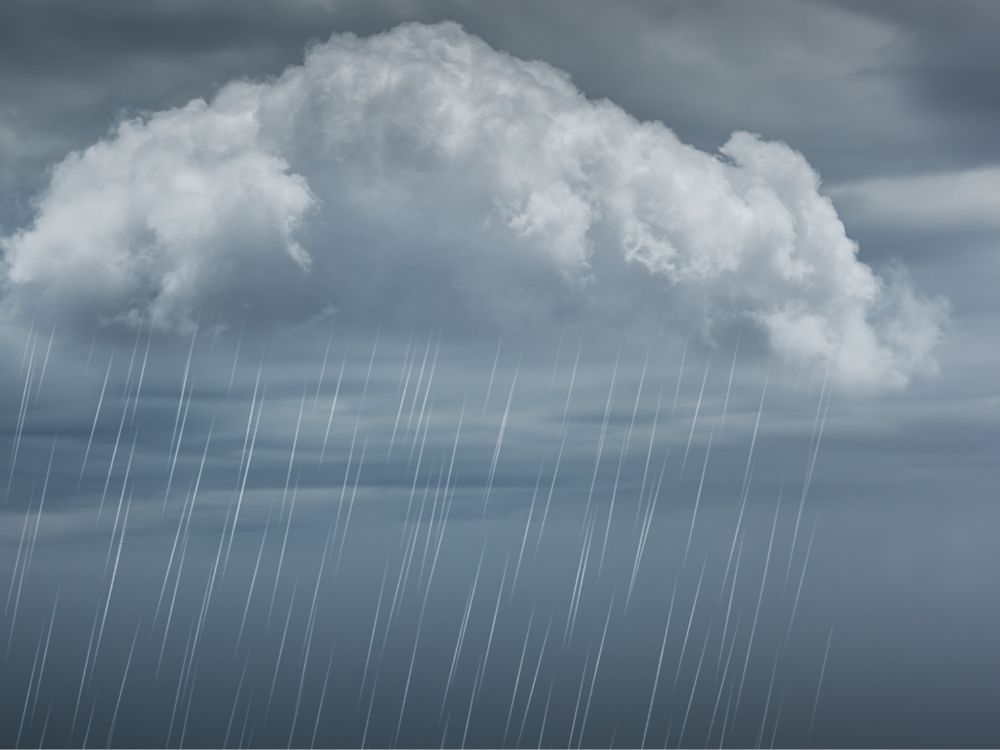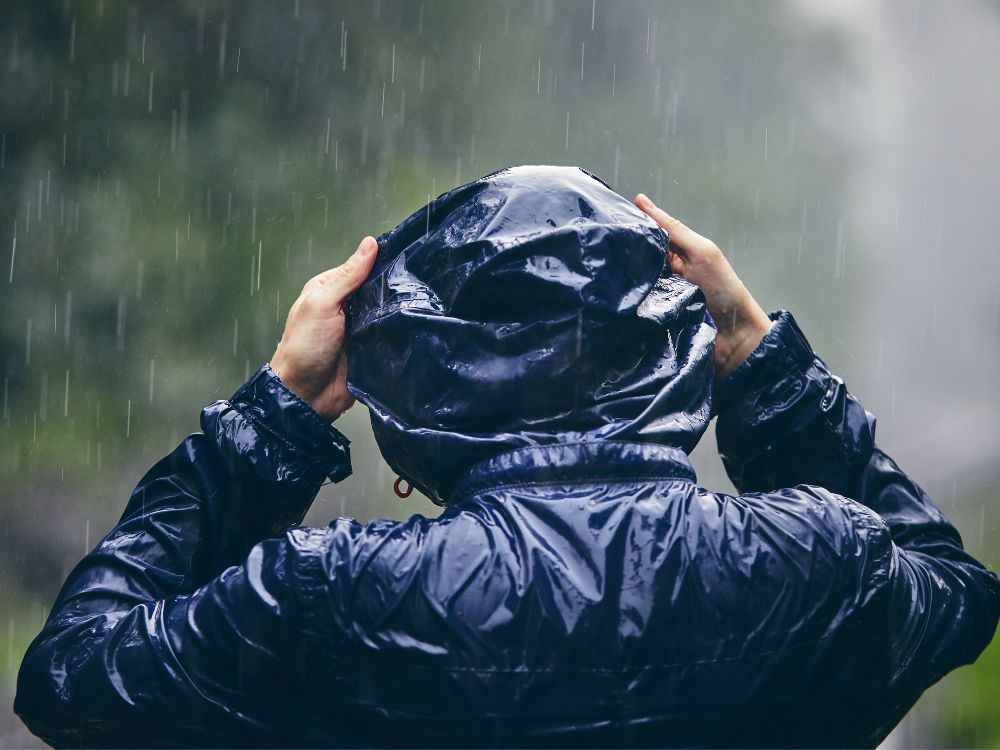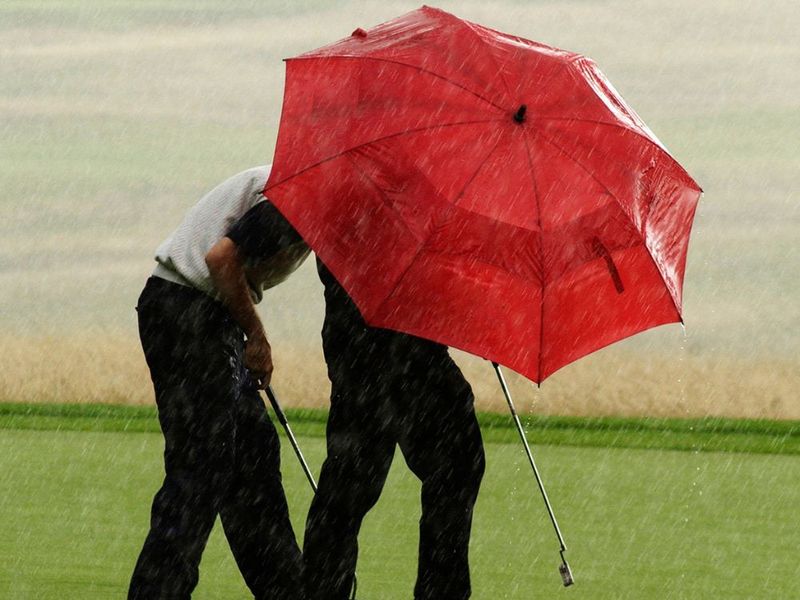Content Summary
Winter's Challenge
Another winter is upon us and with it the challenge of rain. This brings many golfers to the crossroads of - should I play in the rain or wait for sunnier days? In our opinion, rainy days can present an opportunity to bring a new dimension to your golf game.
Golfing in the rain certainly has its difficulties, but with the right preparation and attitude, it can also bring advantages.
Rainy days can make the golf course a unique and memorable experience. Having played many times in the rain myself I know that it comes with it's challenges but also comes with it's exhilarations when you make incredible shots and putts that you had no idea you were capable of.
Benefits of Playing Golf in the Rain
Improved Mental Strength
Playing golf in the rain offers significant benefits beyond just being able to enjoy a round outside. It can also help to improve mental strength.
When you consider that most fair-weather golfers won’t even think to set foot onto a wet and muddy golf course, those who brave the storm can give themselves an edge from which they will gain a great sense of satisfaction and accomplishment.
Rainy conditions drive some golfers inside before they really begin playing, which can ruin their game and lower scores.
Those who do stick it out and play in the rain, however, may find that their approaches become more creative as rain causes them to find new angles or come up with solutions that wouldn't have occurred during drier conditions. This can be a valuable exercise for learning how to think on your feet!
Furthermore, regular players of rainy-day golf develop resilience -- an important part of becoming an experienced golfer.
Being able to play through tough conditions – whether it’s wind, heavy rain or cold temperatures – will not only arm them with the skills necessary for future rounds but empower a more confident attitude towards playing in general by training them to adapt quickly and decisively to whatever weather they're up against.
Improved Focus
Golfing in the rain has several benefits on mental and physical levels. The main one is improved focus. Rainy days are generally slower and quieter than other days, resulting in a calmer environment suitable for better concentration.
Weather conditions such as wind, sunshine and temperature variation can also contribute to a sense of tranquility, which can strengthen focus during golfing sessions.
Additionally, challenges like slippery greens and rain-filled bunkers can increase the difficulty of shots and require more attention to detail when setting up those shots. This heightened level of concentration swiftly improves scorecards, making rainy days ideal for practicing your golf game.
Improved Course Management
Golfing in the rain can help improve your course management as it forces you to consider all the possible weather effects on a hole. For instance, when you’re playing in the rain, your ball won’t fly as far due to the wetness.
Therefore, you might need to use your woods more than usual to make up for this distance difference or hit into the fairway with irons instead of drivers to steer clear of trouble off the tee.
Similarly, golf courses often become soggy when it is raining and balls are likely to do things they would not normally do on them.
When playing in these conditions, you have to adjust your shots and understand that golfers will react differently according to environmental conditions; staying aware of this is an important part of being able to course manage effectively in different situations.
Safety Considerations
Golfing in the rain can be an enjoyable experience, but it is important to take certain safety considerations into account to ensure an enjoyable experience. Rainy weather can introduce hazards that you don't encounter when playing on a sunny day.

Dress Appropriately
Golfing in the rain is not necessarily dangerous if you take the proper precautions. It is important to dress appropriately for the rain before heading out to hit the links.
Choose lightweight, breathable garments that will keep you warm, dry, and comfortable. Wearing layers of clothing can be beneficial as your body heats up when playing a round of golf in the rain.
Opt for clothing with waterproof fabrics or water repellent coatings, such as Gore-Tex, that will keep moisture from penetrating through your garments. Wear bright colors or reflective stripes so that you can be easily seen by other golfers and oncoming traffic if rain reduces visibility.
Consider wearing a hat or hood to protect your face from wind and/or rain. Additionally, make sure you wear rubber-soled athletic shoes that are designed for wet weather conditions to reduce slipping hazards on wet turf and surfaces.
Use Rain Gear
When golfing in the rain, it's important to be properly dressed for the elements. Appropriate rain gear should be used, such as a waterproof jacket and trousers/pants.
This will not only help to keep you dry but also provide an extra layer of insulation against wind and cold temperatures. Wearing shoes with good grip is essential in wet conditions and waterproof shoe covers are a great option.
If possible, golf umbrellas should be used instead of regular ones as these provide extra protection against wind gusts which can cause regular umbrellas to break or turn inside out.
It's also important to make sure your golf bag is waterproof by using specially designed covers or plastic sacks which are widely available at most sporting goods stores or online retailers.
When playing in wet conditions, it's important to use extra caution when taking shots that could become risky due to slippery surfaces and wet ground.
Pay attention to footing when addressing the ball and make sure your feet are firmly planted before taking a swing. Wear waterproof golf shoes.
Additionally, for safety reasons it is advisable not to play on lightning prone outdoor courses during storm activity in order to prevent injury from electric shock.

Check the Weather Forecast
Checking the weather forecast before planning a golf outing is essential to ensuring you and your golfing partners stay safe if rain threatens. If thunderstorms are in the forecast, it is important to postpone or cancel your round.
Even if there is only a slight chance of rain, it’s best to be aware of the potential for rapidly changing weather conditions.
In addition to checking forecasts, pay attention to current conditions in order to determine whether you should get off the course when rain approaches if you can see or hear lightning.
You should also be aware of signs like darkening clouds or increasing winds that can alert you to threatening weather on the horizon. These signs often occur before official storm warnings are issued by authorities or broadcasted via media outlets.
Playing Tips
Rainy days can be a challenge for golfers because the conditions are often less than ideal. However, if you take the right precautions, you can still enjoy a successful game of golf in the rain.
Choose the Right Clubs
Choosing the right golf clubs for a round in wet conditions can be an important factor for enjoying your game.
Drivers, wedges and irons are all affected differently by rain, and although each golfer has preferences that should be taken into consideration, there are some general tips for selecting clubs with rainy weather in mind.
Drivers - You can find graphite drivers, which will reduce the impact from a heavy wet ball, but hardly any advantage can be gained from using a wood due to its heavy weight. A driver with a light shaft and low-to-mid loft angle is usually best suited for rainy conditions.
Wedges - When playing in the rain you may want to opt for the wedge that has more bounce than ones you normally play with. Wedge with an extra 10 degrees of bounce can typically help to reduce excessive backspin that is created when playing on wet conditions.
Irons - Choosing irons requires some trial and error. Generally it is recommended that players use less lofted irons as they cut through wet grass better than higher lofts and they also create less spin on the ball's landing surface making them easier to control in the wet weather.
Adjust Your Swing
Playing golf in wet weather requires adjustments to shots, approaches and swings. When dampness is present, the ball should be played more off the toe of the golf club -- with a longer swing arc -- and even more firmly than normal.
Taking this into consideration helps create a shot that gets airborne more easily and easily cuts through thick, wet ground.
In addition to adjusting your swing, it is important to select clubs that have appropriate lofts for the weather and playing conditions. When considering alternatives, focus on those designed with a large sweet spot or higher moment of inertia (MOI).
A larger sweet spot gives you a measure of forgiveness if you don’t correctly strike the center of the ball while higher MOI helps reduce twist at impact for greater accuracy when dealing with unforeseen circumstances such as wet turf.
Ensuring you have the right grip material is also vitally important when golfing in wet conditions, as rain can make traditional rubber slip from your hands (I learned this first hand on a rainy day when my club slipped from my hands and stuck in the ground during my downswing, my buddies could not contain their laughter).
Use grip tape or wrap a towel around your grip for added support and confidence throughout your round.
Use a golf ball made for wet weather.
Use a Rain Glove
Golf in the rain can be a tricky endeavor. In addition to making sure you have waterproof golf clothing, you should consider using a rain glove while playing. A rain glove is designed to help improve your grip on wet club grips and lessen the effects of perspiration on your hands. A few tips when using a rain glove include:
- Choose rain gloves with waterproof material such as neoprene or Techweave that has good breathability.
- Look for a glove that is both lightweight and pliable so it won't interfere with your swing but can still provide protection from the elements.
- Make sure the gloves have an adjustable wrist strap so they will fit snugly without slipping off during play.
- Select one with superior grip control — look for features like traction dots or checker patterns that will provide more stability in wet conditions.
- Ensure your glove has enough flexibility to allow you to rotate freely when making shots and chipping around the green.
- A breathable, absorbent lining will help keep your hand dry and comfortable by wicking away moisture quickly and efficiently.
Course Maintenance
Playing golf in the rain can be both a tricky and dangerous proposition. Not only can the rain make the course wet and slippery, but it can also lead to issues with the condition of the course. It is important to consider the effects rain can have on the course and the potential consequences of playing in wet conditions.
Check for Standing Water - Golf Course Responsibility
When a golf course is exposed to heavy rain, it is important to check for standing water. Accumulated pools of water can interfere with playing conditions and soil absorption if not addressed in a timely manner. Additionally, standing water increases the chances of turf diseases, such as pythium blight or fusarium blight.
After rainfall, check fairways and surrounding areas for signs of pooling or flooding that may have developed due to poor drainage. This usually occurs in flat areas where good drainage furrows may need to be established.
Where possible, create temporary channels by using rakes or other implements temporarily to keep water from standing in certain areas. If standing water is not addressed quickly, it can cause unnecessary damage and delay play for both professional and recreational golfers alike.
Additionally, improper draining systems that aren't able to eliminate the large amounts of rainfall can contribute to major pond problems that require additional maintenance solutions such as machines used for aeration and topdressing equipment.
Finally, regularly scheduled maintenance work will also minimize the chances of extreme ponding during heavy bouts of rain while helping ensure that optimal playing surfaces are maintained at all times.
Avoid Low-Lying Areas
When golfing in the rain, it is important to be aware of areas that are low-lying or that may have extra pools of standing water. Not only can these areas be difficult to navigate, or slow play, but the added moisture can let your ball come to rest in mud - making the course even more difficult to play.
Whenever possible, your best bet when golfing in the rain is to stay away from these low-lying and wet areas. Avoid areas near creeks and ponds that can quickly become marshy when running water flows through them, course drainage systems and low spots on the fairways or greens.
It’s also wise to take note of course maintenance vehicles such as tractors and lawn mowers and give them a wide berth when they are cutting grass regardless of what kind of weather you’re playing in. While you should normally stay clear, this is especially true if they are harvesting during a storm that could leave extra ruts in the course - which can hinder your game considerably.
Overall, being aware of the current weather during your round is always important but being mindful of vulnerable parts of a golf course during a storm will increase your chances for success by avoiding potential disasters on every hole.
Avoid Areas with Poor Drainage
When attempting to golf in the rain, it’s important to understand potential course maintenance issues that can arise from poor drainage. Poor drainage issues will cause saturated ground and wet sand which leads to significant impact on playability. Overgrown rough, standing water and muddy tees, fairways and greens should be avoided.
When there is limited visibility due to heavy rain, situations on turf will be difficult to judge and could lead to dangerous golf situations. Therefore, maintain your own safety by exhausting all precautions when playing any course in the rain.
Check for signs indicating courses with poor drainage such as mud on golf shoes when you enter or exit the course or persistent puddles across areas such as tees, fairways or greens.
To avoid potential flooding of a golf course during a heavy downpour or storm, some courses work in anti-clogging systems into their existing drain system to help keep drains clear of clogged up matter.
If the anti-clogging system fails however, it could lead to possible flooding of greens, fairways or other low laying terrain within a particular area on the course – making for poor playability conditions if not managed properly by a trained groundskeeper staff member. Be sure it is safe before attempting a round during heavy rainfall and use extra caution when engaging in any activity with water present on the course.
Course Maintenance Tips:
-Offer up recommendations for other golfers that play after you in relation to problem areas
-Replace divots, fill large ball marks left by other golfers and repair ball marks you make on the greens
-Push carts around when possible as opposed to dragging them across soft ground -Remove any debris from fairway / green areas -Firmly rake sand traps after playing out so they may dry faster
Conclusion
Playing golf in the rain can be a challenging yet rewarding experience. With the right gear and preparation you can achieve a successful round, even in wet and soggy conditions. Depending on the severity of the inclement weather, there are a few considerations to keep in mind when deciding whether or not to play golf in the rain.
First, choose equipment that suits the conditions. Soft-spiked golf shoes offer improved traction so that you don’t slip on wet ground, while waterproof gloves and clothing will keep you warm and dry as you play. Consider lighter clubs that shift less weight when swinging in the rain. Most importantly, carry an umbrella to shield yourself from both the elements and heavy rain drops that could interfere with your focus.
Second, focus on short game strategies. Adjusting your stance to improve ball control may provide greater accuracy while pitching or chipping out of damp areas can prove beneficial over longer drives. Strategically place shots based on terrain higher areas have better drainage than low spots as well as wind direction to avoid playing stronger headwinds or crosswinds during storms.
Third, be prepared for adverse conditions by considering how rain alters soft turf around greens. Waterlogged greens are especially slow in wet conditions.
Thank you for visiting and we hope to see you back soon!
Note: We use affiliate links and may receive a small commission on purchases at no additional cost to you.






